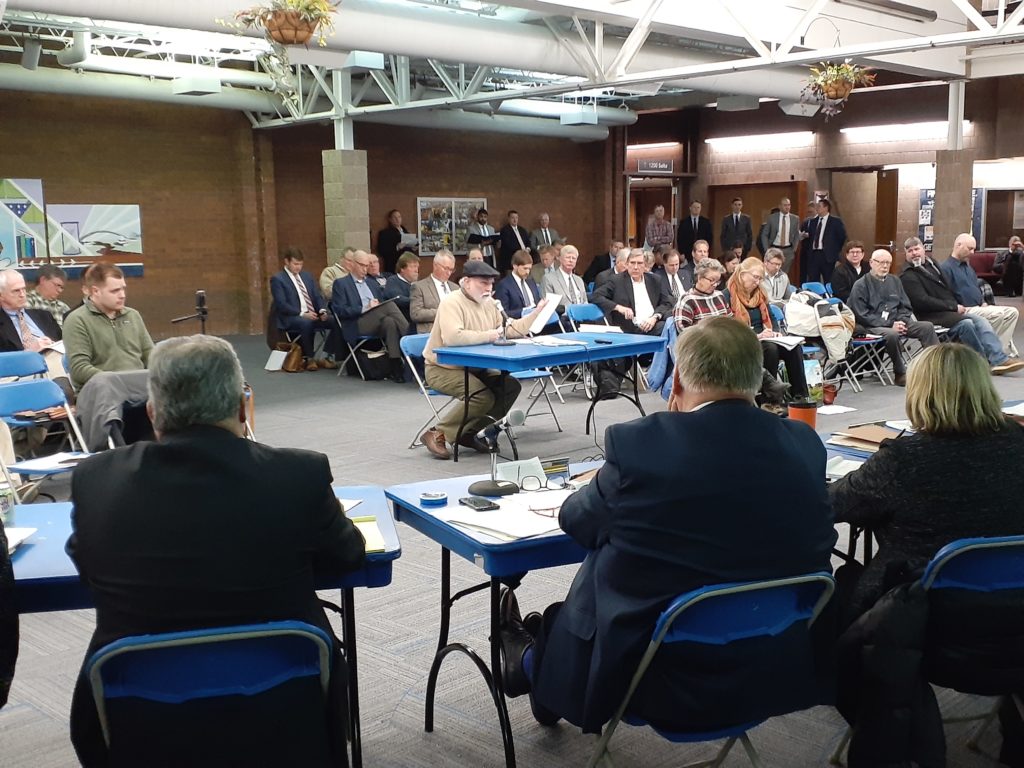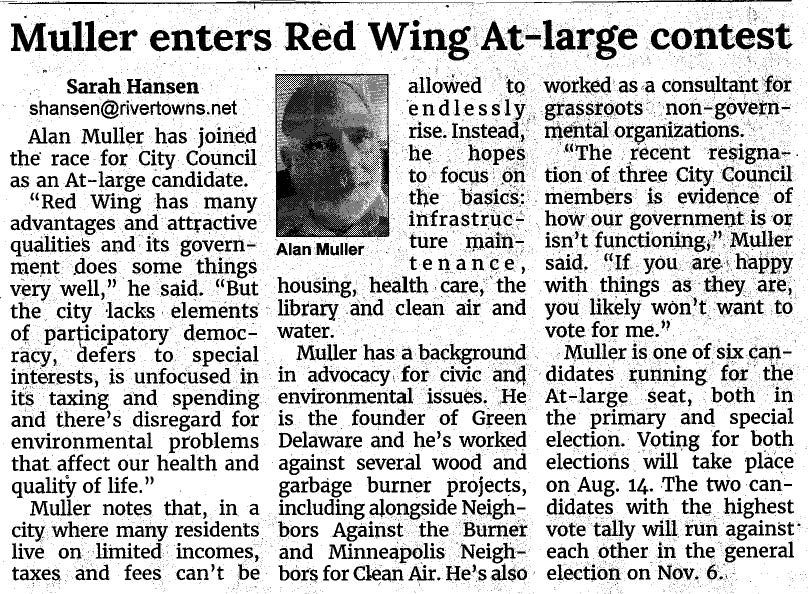SC5558-6 Last night in Rochester
January 16th, 2020

Last night, Sen. Osmek held a Senate Energy Committee meeting in Rochester. It was standing room only, at least 100 showed up (I had 100 flyers, and had 4 left and I know I missed a few).
Here’s the bill DRAFT, SC5558-6:
Here’s the powerpoint explaining the bill:
Who all showed up and testified? All a bunch of paid suits, with just three exceptions, pushed to the very end. Check the list of lobbyists here:
Alan Muller got on the list to testify, he’ll be writing to the Committee soon:

And here’s my comment sent to the committee:
Where were Senators Dibble and Marty? I must confess, I was so disgusted by Sen. Marty’s handling of the e21 debacle back in 2015 that I’ve not been back to the Senate Energy Committee since then (Marty tried to introduce Xcel’s e21 bill, and tried to shut down testimony opposing that bill…
(report from that meeting) though the room was packed with those who had rolled over supporting it, only three of us there opposed it, myself, Alan Muller, and Office of Attorney General’s RUD James Canneday. Sen. Marty pulled the bill as he “introduced” it and then substituted an e21 light and wouldn’t allow testimony on anything else! Well, we did what we could, and it wasn’t until the very end in conference committee or just before that he put the awful Xcel-desired language back in. SF 1735 – SHAME on each Senator who voted for it). Back into the fray, I guess!
My take is that Sen. Senjem, or the Republican caucus, or ???, are concerned about Sen. Senjem’s seat, why else would they put Mikey Bull up there beside him, emitting puffery about the bill? Seems there’s just one other Senate hearing scheduled, info below.


Next up, next week, Mound, Minnesota, in Sen. Ozmek’s district:
Wednesday, January 22, 2020, 4:00 PM
Mound Westonka High School’s Performing Arts Center
905 Sunnyfield Road East
Minnetrista, MN 55364
Now, Mikey, about “carbon capture and storage,” good grief. Did you learn nothing from all those years of Excelsior Energy’s Mesaba Project? Here’s why it’s good the Mesaba Project was not built!
Today – Senate Energy Comm. in Rochester
January 15th, 2020

Minnesota Senator Osmek is convening a Senate Energy Committee meeting in Rochester this evening to discuss a DRAFT bill SC5558-6:
6 p.m. on January 15, 2020
Rochester Community and Technical College
Heintz Center Commons
1926 College View Rd E
Rochester, MN 55904
Here’s the letter I just fired off to Committee members:
Be there or be square!
GRE to dump garbage incineration on the public?
July 9th, 2018

Remember when the site of the Elk River garbage burner was a nuclear demonstration plant? I do, because my father worked on parts of the design for that plant, and characterization after it was operational — I played with the geiger counter as a kid, and the rest is history. Technical difficulties at the Elk River Nuclear Station were many. It was shut down and decommissioned in the early 1970s. Today, that site is now a garbage incinerator.
Remember just one year ago, Xcel Energy going to the Public Utilities Commission to terminate their garbage and turkey shit burning Power Purchase Agreements?
GRE now wants to do the same, and is considering, and is likely to, shut down its Elk River garbage burning operation. News from Elk River, the red highlights are mine, and (red comments in parens are mine). If you get confused what’s what, click on link for original article:
Garbage project closure pondered
Great River Energy would like Elk River Resource Recovery Project to become publicly owned
Muller files for Red Wing City Council
June 9th, 2018
 click for larger version
click for larger version
HERC Power Purchase Agreement DENIED!
November 19th, 2017

Everybody, get out your HERC Hanky and wave it for the home team!!!
Last Thursday was a fairly short, but quite intense, day at the Public Utilities Commission. First up was Freeborn Wind (go here and search for docket 17-332), and its application for a transmission line for the project plus more. We did get the “proceeding” process and not a summary report. That’s good, not a huge deal, but enough that it means we get some extra process in the transmission routing docket, meaning an ALJ drafted Findings, Conclusions, and Recommendation (not just a report), and the opportunity to file Exceptions to the ALJ Recommendation. In those exceptions, we can also ask for public comment and oral argument to the Commission.
Second on the agenda was the HERC Power Purchase Agreement, and Xcel Energy’s HERC PPA Petition to cut the rate (go here and search for docket 17-532).
Bottom line, after much deliberation, and a 10 minute break (what is it they do back there???), here’s the decision option they chose, as framed in the Staff Briefing Papers_201711-137262-01:

Way to go, Mr. Alan Muller!
Seems to me that but for our squwaking, it would have eased on through. But the question remains, where were all the folks who supposedly had committed to shut down HERC?
Primary documents were posted earlier here:


